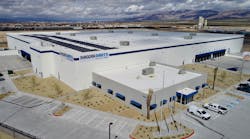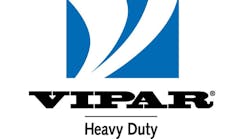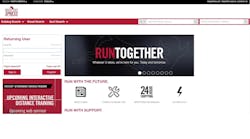ECONOMICS has been known as the “dismal science” since 1849, when historian Thomas Carlyle coined the phrase.
But Steve Latin-Kasper, director of market data and research for the National Truck Equipment Association (NTEA), believes that phrase is only appropriate during recessions — and not economic expansion, regardless of how slow the expansion.
While the United States is not growing quickly on a macroeconomic level, the work truck industry was up 14% in 2012.
“You might have felt bad because the previous year was a 25% growth year, but 14% is a pretty good year,” he said. “We're growing substantially different than the US economy, and we expect to see that continue to happen in this industry.”
In his presentation, “Upcoming Industry and Economic Trends: Impacts on Your Business,” Latin-Kasper said GDP was down 0.1% in the fourth quarter, according to an estimate from the Bureau of Economic Analysis. Consumption expenditures and business expenditures were up, but defense spending was down.
He said GDP is forecast to grow 2.5% in 2013 and 3% in 2014.
“What's behind all this slow growth? Why so much difficulty catching up?” he asked. “In 1982, there was a big bounce in consumer and business expenditures. Each succession of expansion from a previous recession was a little lower in consumer expenditures. Incomes have been slowly falling until the last few years, when they barely grew at all. In that same time frame that incomes were growing slowly, we had a situation where debt was growing. So for consumers and businesses, we had a situation where income was stabilizing and debt was growing, which meant the ratio of debt to income was going up.
“In late 2008, we had meltdown and that made everything that much worse. Since then, it's been harder for the average consumer to catch up to where we have historically been. It's going to start getting better, and we'll start to see things move back to a business cycle that looks more normal.
“In the short run, in 2013, we'll still have a labor market imbalance to deal with and too large a percentage of the total population dealing with a financial situation that doesn't allow them to feel comfortable about spending. Consumer confidence numbers have been coming up for the last year and a half. They're still 20 points shy of where consumer confidence levels were prior to the recession in 2007. That makes it almost impossible to grow swiftly. But the economy will continue to grow.
“We have a long way until the next recession. Most economists feel we don't have to worry until at least 2016, if that.”
Sales of box-off chassis were up 14.1% in 2012, led by a 24.3% gain in strip chassis. Straight truck chassis nearly reached the 300,000 level, and with Class 7-8 tractors coming in at 155,867, the box-off chassis total was 450,408 — a number Latin-Kasper said will grow in 2013.
Class 4-5 relationship
Class 4 trucks grew by just 0.7%, which Latin-Kasper was at a loss to explain.
“I'm not sure I can give you a real good reason, but it saw the lowest rate of growth in 2012,” he said. “It probably had a lot to do with the fact that Class 5 had the best year in 2012 (33.7%). For some reason, work truck buyers were moving toward Class 5 and away from Class 4.”
Total work truck industry sales were $75.9 billion in 2011, $95.4 billion in 2011, and $113.1 billion in 2012, and are expected to reach $120 billion in 2013.
“That compares to a peak in 2006 of $130 billion,” he said. “From where we were in 2012 to where we were at the peak of the industry's growth in 2006, we have another $20 billion to make up, so there's plenty of room for growth going forward.”
He said that according to the Federal Reserve, medium and heavy truck production had a much higher rate of growth coming out of the recession in 2010 and 2011 than in 2002, and it's hard to maintain that 90% growth.
“Medium duty didn't have the same kind of bounce from 2011 to 2012, but both segments were growing more slowly in 2012 than in 2011,” he said. “So I'd expect that the heavy- and medium-duty segments of the industry will flip back up as we move into the second half of 2013 and grow even more strongly in 2014.
“The same thing was happening in trailer market, with a big bounce out of the bottom of the recession through 2011. A very high average age of trailers was the key. You had these ridiculous rates of growth coming out of the bottom of the recession. There's no industry anywhere that can maintain that kind of growth rate for more than a year or two. So to no one's great surprise, that rate of growth started slowing down. As long as it's above zero, you're growing. So we're growing more slowly than we were, but faster than the economy as a whole, and in 2013 it should be better.”
In Class 7-8 straight trucks last year, the inventory gap and shipments got ahead of sales. At the end of 2012, sales got ahead of shipments, “so we probably need to start producing at a faster rate than we were in November and December. I've been hearing about January and February from all over the industry, and reports were good. ATA said freight shipments have been good. I think it's looking pretty good going into the second quarter in terms of the monthly data we're hearing about.”
At the end of 2006, 30,000 boxoff chassis were being produced a month. Now the industry is coming off a bottom of 10,000 in 2011 and is back up to 17,500.
“Once again, there's plenty of room to grow,” Latin-Kasper said. “The critical point is that all the capacity that was in place then is still in place. We're not likely to be building any new plants in this industry any time soon. It's not necessary. There's still space to grow inside our buildings. We're probably not running all of our machinery. We're not yet to the point where we'll be engaging in a massive amount of capital expenditures. But we're not that far removed from the day when you will need to start thinking about it.”
He said business truck production was up 75% in 2011, but state and local government spending remained flat. Spending has gone up 4% since then, but he said health-care issues are a red flag.
“It's a problem that's going to be difficult to deal with quickly, and that goes back to a demographic statistic: We are getting older and generally requiring more medical care,” he said. “That is likely to get a little bit worse going forward unless there's something else changing along with it. That probably will be some sort of structural change in those programs and some other system in place to fund it. The alternative is not taking care of the labor force. I don't think that's going to be a realistic option.
“Even as revenues were going up and expenditures increasing, expenditures on construction were going down in 2012. State and municipal governments still have some financial headaches to deal with. It's a good market for trucks and truck equipment, but it's not going to be a market you can count on for growth. It'll be a stable market for a couple of years. Whatever you are doing now is probably what you'll still be doing in 2015.”
In private construction, total expenditures were up 14% for 2012, which is, he said, “very good news.”








